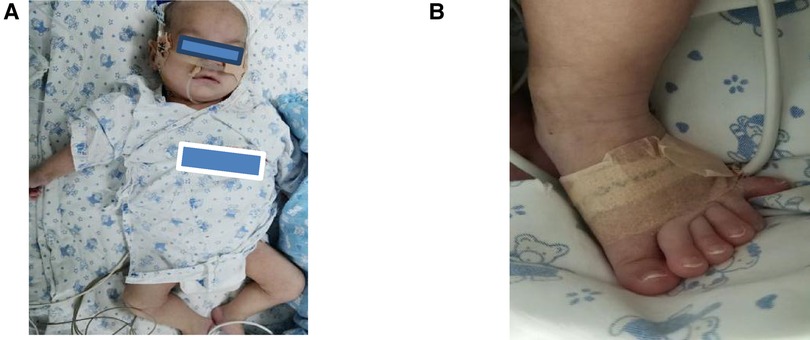Rubinstein-Taybi syndrome in a Saudi boy with distinct features
Por um escritor misterioso
Descrição
Background Rubinstein-Taybi syndrome (RSTS) Type 1 (OMIM 180849) is characterized by three main features: intellectual disability; broad and frequently angulated thumbs and halluces; and characteristic facial dysmorphism. Case presentation We report on a Saudi boy with RSTS Type 1 and the following distinct features: a midline notch of the upper lip, a bifid tip of the tongue, a midline groove of the lower lip, plump fingers with broad / flat fingertips, and brachydactyly. The child was found to be heterozygous in the CREBBP gene for a sequence variant designated c.4963del, which is predicted to result in premature protein termination p.Leu1655Cysfs*89. The child and his father were also found to be heterozygous in the EP300 gene for a sequence variant designated c.586A > G, which is predicted to result in the amino-acid substitution p.Ile196Val. Conclusion Our report expands the clinical spectrum of RSTS to include several distinct facial and limb features. The variant of the CREBBP gene is known to be causative of RSTS Type 1. The variant in the EP300 gene is benign since the father carried the same variant and exhibited no abnormalities. However, functional studies are required to investigate if this benign EP300 variant influences the phenotype in the presence of disease-causing CREBBP gene mutations.

Rubinstein–Taybi syndrome in diverse populations - Tekendo‐Ngongang - 2020 - American Journal of Medical Genetics Part A - Wiley Online Library

Rubinstein–Taybi syndrome - Wikipedia

Facial dysmorphism, skeletal anomalies, congenital glucoma, dysplastic nails: Mild Rubinstein-Taybi Syndrome - ScienceDirect

PDF] Chromosome 16p13.3 Contiguous Gene Deletion Syndrome including the SLX4, DNASE1, TRAP1, and CREBBP Genes Presenting as a Relatively Mild Rubinstein–Taybi Syndrome Phenotype: A Case Report of a Saudi Boy

An Egyptian patient with Rubinstein-Taybi syndrome. Facial features

Patient 1 showing a mild RTS variant (incomplete RTS). (A, B) Note

Rubinstein-Taybi syndrome: MedlinePlus Genetics
.jpg?resize=1000%2C667&ssl=1)
Silas : Rubinstein-Taybi Syndrome » SWEET NECTAR SOCIETY

Psychiatric Profile in Rubinstein-Taybi Syndrome

Mosaic CREBBP mutation causes overlapping clinical features of Rubinstein– Taybi and Filippi syndromes

Mental retardation, growth retardation, unusual nose, and open mouth: An autosomal recessive entity - Alkuraya - 2010 - American Journal of Medical Genetics Part A - Wiley Online Library

Silas : Rubinstein-Taybi Syndrome » SWEET NECTAR SOCIETY

Rubinstein-Taybi Syndrome: A Complete Overview — DermNet

Rubinstein-Taybi syndrome
de
por adulto (o preço varia de acordo com o tamanho do grupo)







